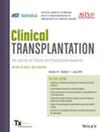Where Do Organ Donors Come From in the United States? An Analysis of Urban and Rural Donation
Abstract
Background
One of the primary limiting factors in organ transplantation is limited supply of deceased donor allografts. Although there are multiple potential strategies to increase transplantation access, increasing donor organ supply remains a priority. This study aims to analyze the origins of donor supply based on donor and hospital ZIP codes.
Methods
Organ Procurement and Transplantation Network (OPTN) deceased donor database was analyzed. ZIP codes were assigned Rural-Urban Commuting Area (RUCA) code based on definitions from the WWAMI Rural Health Research Center. These RUCA codes, ranging from 1 (metropolitan core) to 10 (rural), allowed for a census-based classification of donor residential ZIP codes. Donor density was calculated as donors per million population. Proportionality between donor rurality was compared to general mortality data from the CDC WONDER database. Statistical analysis was performed in Stata 17.0.
Results
Rural zones and micropolitan zones supply 7.2% and 9.7% of donors despite accounting for 8.5% and 10.7% of deaths, respectively. In contrast, urban zones yield 83.1% of donors while accounting for 80.8% of deaths. Donors from rural and micropolitan regions were on average younger and more likely to have trauma-related mechanisms of death, while being less likely to be expanded criteria donors (ECD) or to have required pressor support. Lastly, rural and micropolitan donors were more likely to have written intent to donate.
Conclusion
The donor supply from rural and micropolitan regions is not fully reflective of their population size or donor potential. These communities may represent a valuable opportunity to expand the national donor pool through continued outreach and collaboration.


 求助内容:
求助内容: 应助结果提醒方式:
应助结果提醒方式:


